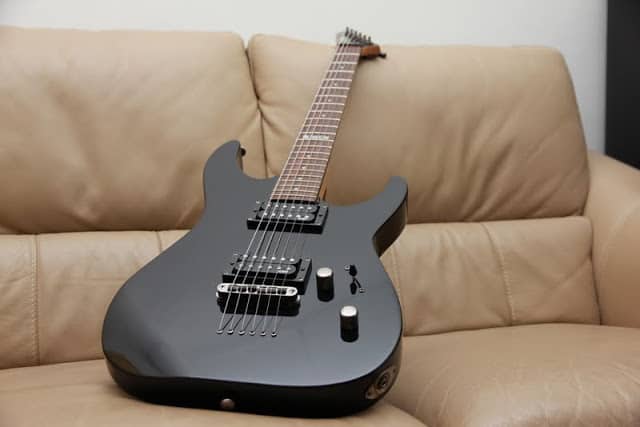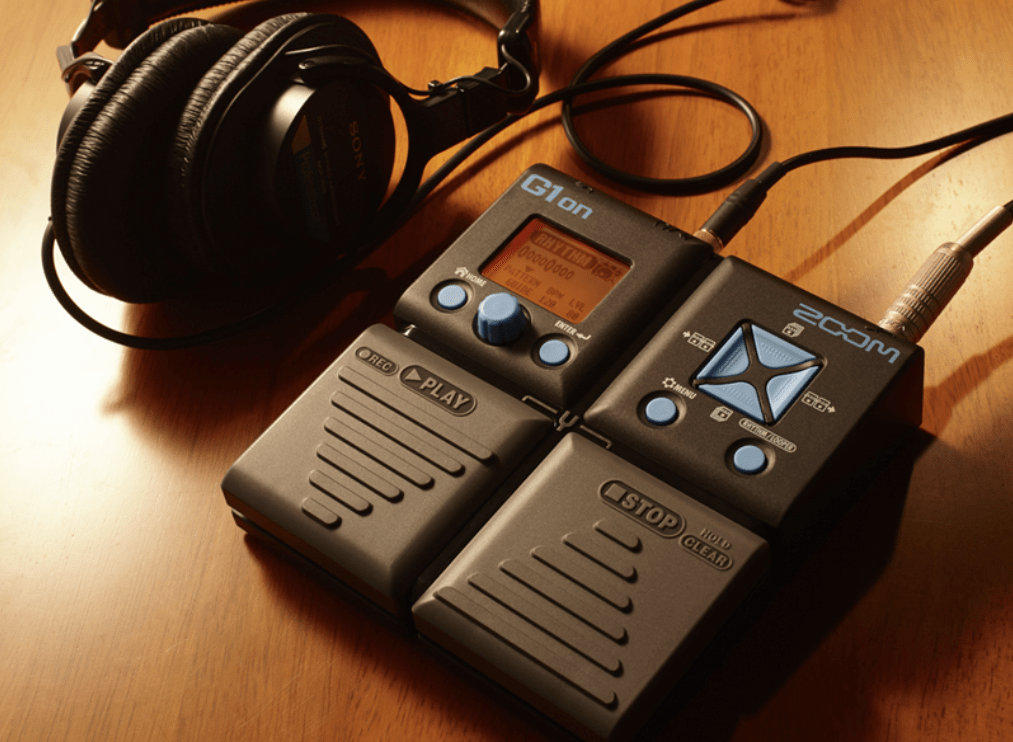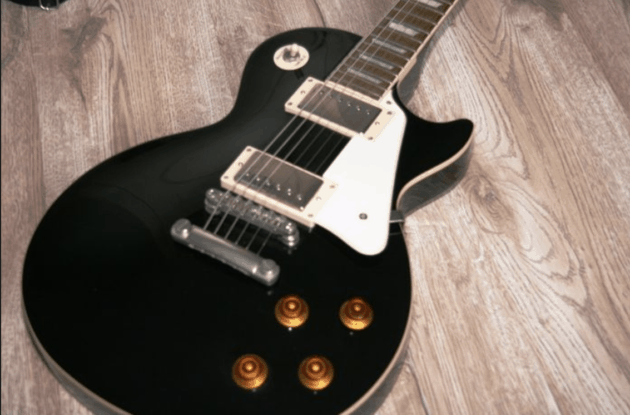Review: Martin D-28 – does an iconic guitar deserve the hype?
Anybody playing electric guitar can have an easily identifiable iconic shape, like a Les Paul or Strat, in their hands, and people will identify it as such from a mile away.
Before we begin, make sure you’re ordering Martin D-28 from a legitimate retailer, NOT from a counterfeit seller. For your convenience, here is the Amazon link to an authentic Martin D-28 retailer.With the exception of the Hummingbird, acoustic players mostly don’t have that luxury. From far away, this guitar could be as much a Martin D-28 as a Yamaha F335.
D-28s, however, are something special, and their design is regarded as the classic American design. With a list of players spanning everybody from Elvis, to The Beatles, to Marcus Mumford, this is a guitar for professional players if ever there was one.
Core specs
The D-28 is one of those instruments where the guitar itself is its own selling point. Running through the specs, there’s nothing that stands out as groundbreaking, but the price tag indicates that the parts will be in a different league of quality compared to cheaper guitars citing similar specs.
| What body style is it? | Full-size dreadnought | |
| What top wood does it use? | Sitka spruce | |
| What body wood does it use? | East Indian rosewood | |
| What wood is the neck made from? | Select hardwood | |
| What wood is used for the fingerboard? | Ebony | |
| How many frets does it have? | 20 | |
| Does it have electronics? | No, but it is an optional upgrade | |
| Dexterity? | Right or left-handed models available |
Parts
All of the parts on the D-28 are Martin’s own brand. That’s fair enough: the D-28 has been selling since 1930 – you trust them to know what they’re doing at this stage. It just looks like such a humble, unassuming and underwhelming guitar. There are no bells and whistles on this to make it fancy looking.
For me, the standout feature of the parts is the ebony fingerboard. I always find that such a hallmark of class. Even though you can get them on much cheaper guitars these days, you know this will have better quality, higher density stuff.
There are a couple of things about the list of parts that I find unusual though. Firstly, the back and sides are made of East Indian rosewood. Mahogany is a far more common material to be used in such areas. If you’re thinking of looking into getting one of these cheaper from abroad, be mindful that rosewood is highly regulated, and you will likely have to pay a hefty fee to US customs to import it.
The other weird thing is the neck material is list as “select hardwood.” That seems incredibly vague, and I do like transparency in where materials have been sourced from. Somme Googling suggests that it means either mahogany or Spanish Cedar, depending on availability.
Although the parts are pretty standard, a large part of the D-28’s price is to do with its American construction.
Construction

It’s hard to know what to say about the D-28’s construction: you’re not remembered as the basis of other guitars for over 80 years, and charge the far side of $2500 if your construction is shoddy!
It goes without saying that the craftsmanship that has gone into this D-28 is entirely flawless. From the neck joint to the binding around the body, to the fingerboard and neck construction. It’s all perfect.
I do want to draw your attention to the construction methods though. In case you have visions of some gentleman working alone in a dusty workshop, with only a bottle of whisky and a crackly wireless radio playing Johnny Cash for company, lovingly putting your D-28 together.
It’s quite the opposite. Martin pride themselves on being innovators in guitar construction, and unfortunately, when they make such high-demand guitars, they need a slick construction process. Back in the 30s, there was a two-year waiting list for a D-28 – I think they’re keen to avoid returning to that!
The D-28 is designated as one of their Playability Enhanced models, which means it has been subjected to their Plek processing. This is actually a very cool piece of tech. Apparently it scans the guitar’s neck, and dresses the frets according to the neck tension and emulates the guitar being played, to create the guitar around the playing experience.
I told you it was cool!
This gives Martin a much quicker fret dressing process and will give them consistent quality across the range.
Tones
It’s rarely that a guitar tone is so “everything” that I struggle to describe it.
I played this in a medium sized living room with a wooden floor, with curtains that would give a bit of dampening: it shouldn’t be too boomy or reverby. I used a 1mm pick.
So how do I describe the sound of a D-28 in its most natural form? Think of every acoustic guitar sound that’s ever sent a shiver down your spine, roll it into one, and that’ll get you pretty close.
So, what is it about the tone that just nails it? For me, I think it’s the balance of the sound. If you want the quintessential acoustic guitar sound, that will cover all bases ever, this is it.
Playing at home or recording is one thing, but you want to sound as good as possible live too. If you don’t have the electro-acoustic D-28 model, that could be tricky. Most sound engineers are ropey when it comes to micing up acoustic guitars as it is, that I find it hard to believe they’d do your D-28 any justice.
Unless you’re working with world-class techs, there’s a good chance that bringing it to play a gig is a waste of time.
Playability
The only barrier to enjoying playing this guitar is holding it in such reverence that you become intimidated by it. You do need to get over that and enjoy it: this is a guitar that was made to play!
In terms of the physical playing of it, for me, it’s all about the ebony fingerboard. I like ebony fingerboards. But the balance between the ebony and the action on the strings is just right. On electrics, I’d favor a low action, but I like a bit of fight in an acoustic guitar – there’s less room for mistakes, so a little extra action will help to really focus your playing.
There’s no discomfort in playing up and down the neck. The Plek system is clearly very effective! There’s no catching or sharpness at all. Combine that playability with the perfection of its tone, and this guitar is as good as good as it’ll get.
There isn’t anything to fault at all in this guitar. But going back to that price tag, you’d really hope there wouldn’t be!
Obviously, the price tag on the D-28 is a big ask, and one of the main barriers to accessibility.
Conclusion
This guitar is aimed at professional musicians though, especially those who will be working in high-end studios, with the appropriate equipment to get the most out of its glorious tone. If you’re in the position that you just need a nice acoustic for your living room, good for you.
If you’re a beginner or intermediate player, quite frankly, the tone will be wasted. For all the hype around this guitar, it’s difficult to justify the spend if you’re working in low-end studios.






Dear Reviewer,
In reading you question Martin’s decision to use rose wood on the back and sides as opposed to mahogany. As a reviewer of guitars you should understand that Martin D28’s are not made with mahogany, you must select another style of Martin for that. Why would they take the classic D28 that has always been made that way and make it mahogany?? Pick up the D15 if you want mahogany.
What a beaut! Been waiting most of my guitar playing life to get one of these in my hands. The first thing to hit you is the smell when you crack open the case for the first time. A cross of glue, finish, and rosewood that instantly sinks itself into your memory like the perfume of a woman you can’t readily get out of your mind.
The tone is simply amazing. I spend many years plucking away at guitars with much satisfaction. I don’t know if it is the legendary status of the D-28 that is intoxicating me or the fact that it really is that much better than anything I have ever played. Scales and chords are just easier to hit…and the sustain of this guitar makes transitions seem flawless. The intonation is superb…and you can easily notice how subtle changes in strumming and picking volume impact your playing.
20+ years I have been waiting for this sound…and while I am certain there are better guitars to be found that reach as deep as deep as your pockets can go and then some…at the $2000-$3000 price point…you cannot pick up a better guitar.
Over-rated? I have no clue…it is the best I have ever played. Worth every penny? You can bet your arpeggio skills on it!
Who says a beginner or intermediate player won’t appreciate the tone? I’ve only been playing for a little over two months, but I’ve been listening for 50 years. The difference in tone between this and other guitars is quite easy to pick out, and at age 51 and as a lifelong fan of acoustic guitar music, I knew exactly the tone I wanted.
I’ll add another thought as a beginner. Practice is the most important thing and the only way to improve. Practice is a whole lot more enjoyable when every note or chord I play sounds like the heavens opening the guitar gods smiling down upon me.
ANDREW: EXCUSE THE CAPS. BUT IT’S EASIER FOR ME…..I HAVE BEEN PLAYING FOR FIFTY YEARS AND JUST FIFTEEN YEARS AGO I GOT MY D-28….IF I’D KNOWN WHAT I WAS MISSING, I’D A BOUGHT ONE FORTY YEARS AGO. LOT’S OF LUCK TO YOU AND YOUR D-28. TOM.
I totally agree with you. I had an old Yamaha since a teenager could strum a few chords but never really play well. Bought a Martin DC-16 OGTE at the age of 50 & fell in love with Martins. Just ordered a HD-28 & gonna put an LR Baggs Anthem in. I’m 61 now and an intermediate player. Spent lots of time on you tube to craft my skills. I dreamed and waited many years to get the HD-28. It truly is the best sounding guitar around. I’ve tried many others and although there are a few good ones. This one kept calling out my name.
As a semi-lifelong guitar player, ive played a lot of guitars from drugstore purchased cheapies, hand-me-down beaters, and even some new mid-grade guitars. My first experience with Martin was a DX1 in a local music store. It immediently grabbed my interest. After buying it, I became curious about if the “cheaper” Martin sounded this good, what would a higher end one be like. I saw the 1935 d-28 reissue reviewed on line and decided to take a leap of faith and ordered one. I was at the store the day it came in in the original shipping box. I helped the shop owner open it up. Right off the bat I was impressed by the quality of the Martin hard case it was in. Opening the case was a treat to the senses. It smelled great. Visually the guitar was extremely clean. After lifting it out I was additionally impressed it was in tune! The action was pleasing and the first chord I hit made me know for sure I had NOT made a mistake. This was BY FAR the most exquisite guitar I have ever played. YOU CANT GO WRONG WITH A D-28! Had it over 3 years now. Stays tuned. Tone has even gotten better as it ages. This thing is LOUD and very responsive. GET-CHA-ONE!
if you think the typical D28 sounds amazing….if you can find ine ( I was lucky enough to purchase one)..play a D28 1931 Authentic.
12 fret…will blow you away ! LOL.